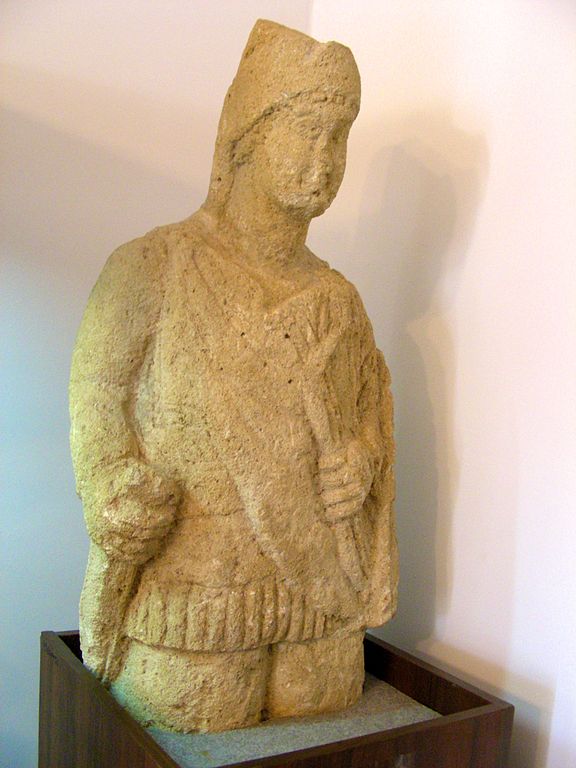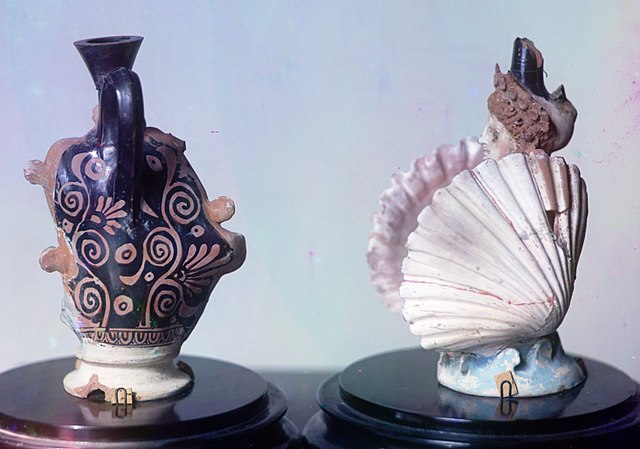
| SINDI PEOPLE
Sindi warrior statue. Limestone, I A.D. Kerch Archaeology Museum
Ancient terracotta vessels unearthed at the Sindian necropolis near Phanagoria. The photograph by Prokudin-Gorskii (ca. 1912) The Sindi (Greek: Herod. iv. 28) were an ancient people in the Taman Peninsula and the adjacent coast of the Pontus Euxinus (Black Sea), in the district called Sindica, which spread between the modern towns of Temryuk and Novorossiysk (Herod. l. c.; Hipponax. p. 71, ed. Welck.; Hellanic. p. 78; Dionys. Per. 681; Steph. B. p. 602; Amm. Marc. xxii. 8. § 41, &c.). Their name is variously written, and Mela calls them Sindones (ii. 19), Lucian (Tox. 55), Sindianoi.
Strabo describes them as living along the Palus Maeotis, and among the Maeotae, Dandarii, Toreatae, Agri, Arrechi, Tarpetes, Obidiaceni, Sittaceni, Dosci, and Aspurgiani, among others. (Strab. xi. 2. 11). The Great Soviet Encyclopedia classes them as a tribe of the Maeotae. The Cambridge Ancient History refers to the Sindi as a Scythian people dominant among the Maeotians, whom it considers as either of Cimmerian ancestry or as Caucasian aboriginals under Iranian overlordship.
In the 4th century BC, the Sindi were the people inhabiting the Sindike Kingdom, which were under the rule of Hekataios and his wife Tirgatao until the latter was dethroned. The son of Hekataios, Oktamasades, was later the ruler of the people after having usurped the throne from his father and was warred by Leukon and defeated him shortly thereafter. The Sindi were subjugated by the Bosporan Kingdom presumably during the wars of expansion. They left multiple tumuli which, when excavated by Soviet archaeologists, revealed that their culture was heavily Hellenized. The Sindi were assimilated by the Sarmatians in the first centuries AD. Besides the seaport of Sinda, later known as Gorgippia, other towns belonging to the same people were Hermonassa and Aborace. (Strab. xi. 2, et. seq.) They had a monarchical form of government (Polyaen, viii. 55), and Gorgippia was the residence of their kings (Strab. l. c.).
Nicolaus Damascenus (p. 160, ed. Orell.) mentions a peculiar custom which they had of throwing upon the grave of a deceased person as many fish as the number of enemies whom he had overcome.
Source :
https://en.wikipedia.org/ |

